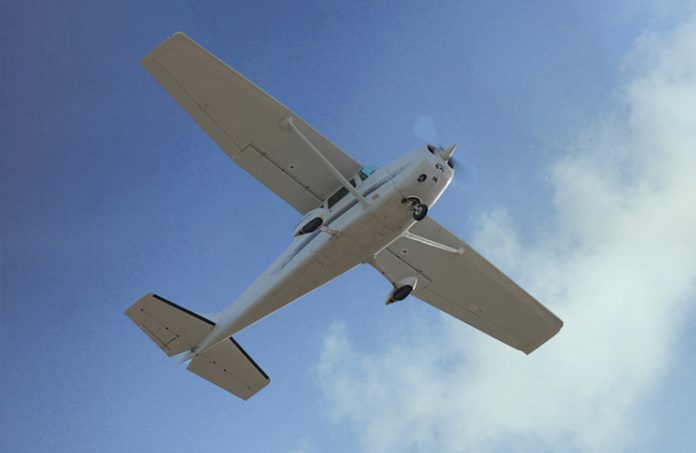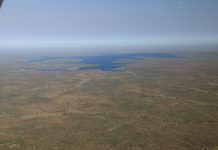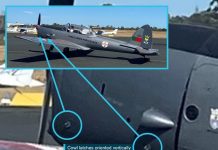How do you judge when it’s better to stay on the ground?
Of all the aviation clichés in the world, my very favourite is, ‘It’s better to be down here wishing you were up there, than up there wishing you were down here.’
Like most adages, it’s effective because it’s so true, as anyone who’s been up there wishing they were on the ground will attest.
As COVID-19 restrictions ease (in some states) and allow us to fly once more, it’s understandable that we’re itching to take-off into the great blue yonder. However, while enthusiasm and determination are vital traits in a general aviation pilot, some days it’s better to simply stay on the ground.
As private pilots—and in a good deal of commercial cases in GA—we never have to go flying. Yet, while general aviation accounts for one third of the total hours flown by Australian-registered aircraft, it accounts for more than half of aircraft movements across Australia. The total accident rate, per hours flown, indicates general aviation operations are 10 times more likely to have an accident than commercial operations, with recreational aircraft around twice as likely to experience an accident than general aviation.
The fatal accident rate, per hours flown, indicates general aviation operations are around 20 times more likely to experience a fatal accident than commercial air transport, and recreational operations are almost 40 times more likely to experience a fatal accident than air transport.
In 2016, almost 230 aircraft were involved in accidents in Australia, with another 291 involved in a serious incident (an incident with a high probability of an accident). Collision with terrain is the most common accident or serious incident for general aviation, recreational aviation and remotely piloted aircraft.
Of all the emotions experienced in GA, those summed up in my favourite cliché—regret, fear, anxiety—are those we covet least when we fly. No pilot wants to feel out of their depth, and yet loss of control is still killing people.
Let’s take a look at the four main reasons to pull up the doona and stay in bed, and examine some cases where pilots may have wished they’d stayed on the ground.
The whether weather
The hardest weather to read is when it’s middling. Some days are just too vile to go and about that there’s no ambiguity—low dark cloud, heavy rain and howling winds are all reasons to stay on the ground. Conversely, some weather is too splendid to simply not fly and, again, this is easy enough to read. It’s the ambiguous days that kill.
Almost every pilot I’ve interviewed has had a weather scare, from unexpected turbulence to surprise cloud. Of all the aspects of aviation, weather is one of the least predictable. However, there is an abundance of resources available to pilots to gain a fuller picture of the weather on the days leading up to, and on the day of, our flight, as well as en route.
Local conditions: Not only is the weather different everywhere, it can change within a few nautical miles. Understanding local weather conditions is vital. Utilise the knowledge of local pilots, study the weather patterns of the area and, if available, contact the tower or even the Bureau of Meteorology on the day of your trip to gather more information about the conditions at the strip.
Internet resources: BOM’s aviation weather services, bom.gov.au/aviation, particularly the Knowledge Centre. NAIPS, CASA and your EFB also have weather resources.
Turbulence: On 24 January 2020, a Cessna 182Q was conducting a private flight operating under visual flight rules from Warwick, Queensland, to Dubbo, New South Wales. The pilot was the only occupant on board. Forecast weather in the area at the time was low cloud and thunderstorms.
During cruise at 4500 feet AMSL, the aircraft encountered severe turbulence at a speed above the aircraft’s turbulence penetration speed. The pilot conducted a climb and levelled off at 6500 feet in an attempt to avoid further turbulence.
The pilot reported that the aircraft then encountered a severe updraft, resulting in a climb and change of heading of approximately 180° with little to no control of the aircraft. The pilot began a descent to remain out of cloud. The pilot then descended through cloud to 3500 feet and tracked away from the area, clear of any further cloud and turbulence. While attempting to turn back onto heading, the aircraft was struck by a severe downdraft followed by an updraft, resulting in another heading reversal of approximately 180°.
During the post-flight inspection at Dubbo, it was identified that both wings near the wing strut were bent and warped with visible deformation.
Zen and the art of aircraft maintenance
Whether you own or hire an aircraft, an element of trust in others is required. In the case of private ownership, a LAME should be near the top of your Christmas card list. The LAME is the eyes and ears of your aircraft’s wellbeing and the only person/people who has seen your aircraft naked.
When hiring an aircraft, the pre-flight checks are among the most important of the flight. In my experience of hiring over a 10-year period, I have encountered flat tyres, a deflated strut, water in the fuel tanks, a live magneto, an inoperative transponder, engine fouling and broken radios. Hirers should be familiar with the maintenance release but getting to know the LAMEs who work on the aircraft can be an educational experience.
There are no shortages of reports detailing accidents related to negligent pre-flight and run-up checks. Fuel exhaustion is still a leading cause of engine failure, as this case demonstrates.
On 28 September 2019, the pilot of a Piper PA-25 was conducting glider-tow operations at Benalla Airport, Victoria. After releasing the glider at about 4000 feet AGL, the pilot began a descent to 1000 feet. During descent, the engine failed. The pilot subsequently switched fuel pumps and activated the emergency power system but experienced no restoration of engine power. The pilot assessed the aircraft was too low to conduct a glide approach to the runway and elected to land in a paddock near the airport. After the forced landing, the pilot checked the fuel tank and identified it was empty.
The procedure for refuelling the aircraft was to refuel at the beginning of the day, and again after one hour of towing time. The pilot advised that he took over the aircraft and inspected the log, observing a total of 35 minutes towing time logged. This was consistent with the number of tows completed for the day. The pilot’s expectation was there was sufficient fuel for another four or five glider tows. The pilot did not visually inspect the fuel tank to confirm the fuel levels during the pre flight walk-around and mentioned the fuel gauge indication was difficult to read.
A thorough pre-flight can save your life. Fuel exhaustion, fuel contamination, improperly latched baggage doors and failure to remove protective gear are still major causes of accidents. If you detect something that doesn’t appear to be right, report it to your flying school/LAME straight away.
Are you safe?
Physical and emotional wellbeing are essential components of a successful flight. While physical symptoms are easier to identify, emotional issues such as stress, exhaustion and anxiety are often dismissed as part of our daily life.
Much has been written about the stress on pilots and aviation professionals in their work, and human factors is now an integral part of the aviation syllabus; however, the general stresses of life—family, health, financial worries, personal issues—are not the specific focus of human factors. Aviation professionals are taught to recognise workload stress but the broader stress factors of life are equally relevant and not often discussed.
On 6 August 2019 at approximately 1910 Western Standard Time, a Textron Aviation Cessna 172S was conducting night circuits on a private‑hire arrangement at Jandakot Airport, Western Australia, with one pilot on board.
After the aircraft had landed, the pilot carried out a post-flight inspection and detected damage to the propeller. The damage had resulted from the tow bar not being removed during the pre-flight inspection and remaining attached to the aircraft after departure. The tow bar was found within the aerodrome confines; however, it is unknown exactly when it detached.
The pre-flight check was carried out in the hangar before towing the aircraft onto the apron, as the pilot could not access the exterior hangar lights. The pilot reported this altered his workflow pattern, distracting him from the fact the tow bar remained attached to the aircraft.
The pilot also reported feeling tired as he had worked at his primary occupation earlier in the day, prior to the incident, and had also been on night shifts preceding the incident.
This incident highlights the risk associated with operating aircraft when fatigued. Hours of work outside of flying that are not counted in flight and duty limitations can lead to a reduction in human performance and increase the risk associated with missing critical details prior to or during flight.
What’s that funny feeling?
Although logical processes are the primary source of cockpit decision-making, there is something we generally ignore in aviation—call it a sixth sense or intuition or just an uneasy feeling. Emotional reactions are a valid indicator of what’s occurring at a subconscious level. If a nagging gut feeling turns out to be right, learn from it by incorporating the result of that feeling into your personal minimums checklist.
Referring to an incident which occurred at a regional airport last year, the commercial pilot cited ‘a gut feeling’ about wildlife.
If a nagging gut feeling turns out to be right, learn from it.
I was backtracking a runway at night and had a deeply uneasy feeling about there being debris across the runway (I hadn’t seen any debris, more of a premonition/assumed risk due to a sudden wind front that had just passed through). I asked the safety vehicle to do a runway inspection while we waited at the threshold.
Instead of debris, the driver said, ‘There’s hundreds of bats just above the vehicle. I’ve never seen anything like this before. Plague proportions! They’re flying into my windscreen.’
The wind direction and migratory path of the bats meant they didn’t clear for nearly an hour. I learnt then to trust my gut, to err on the side of caution. That was a weird night, because we then decided to add a whole heap of ‘unnecessary’ fuel after we taxied back—it was needed with unforecast storms requiring holding at destination. Again, I followed my gut. Trust that feeling.
A GA pilot does not have to fly. Personal minimums, thorough pre-flight checks, an awareness of your health and wellbeing and trusting yourself, both practically and in terms of gut reaction, are critical parts of decision-making.
However, if the plan of the day starts to ‘feel’ wrong or multiple occurrences impact your plan (water in fuel drain, followed by a negative change in weather which leads to an uneasy feeling), consider making a coffee, staying on the ground and, as one pilot in a chat room put it, ‘be thankful you’re in the crew room, rather than up there wishing you were down here’.






Probably the hardest decision is when not to fly. Good article.
Great article Kreisha.
I received the best weather avoidance advice years ago from the refueller and local charter operator at Hay NSW after a flight in marginal weather. His advice: “if you can’t be sure of maintaining a clear horizon don’t proceed. This advice is simple, straightforward and for me works a lot better than trying to apply abstract statutory rules which are almost impossible to estimate and follow.
NZ CAA have an excellent small publication on mountain flying. Perhaps CASA /ASA could ask NZ CAA to reproduce same as say several articles..
Good article. You’ve still got the touch, Kreisha! Here’s my contribution:
I lined up and started rolling on runway 05 at YTYH in my Sonex. Full power and something didn’t feel right. I taxied back to the hangar and ran it up. I sat there in disbelief as the prop went cartwheeling through the trees. Broken crankshaft! If it doesn’t feel right it probably isn’t.